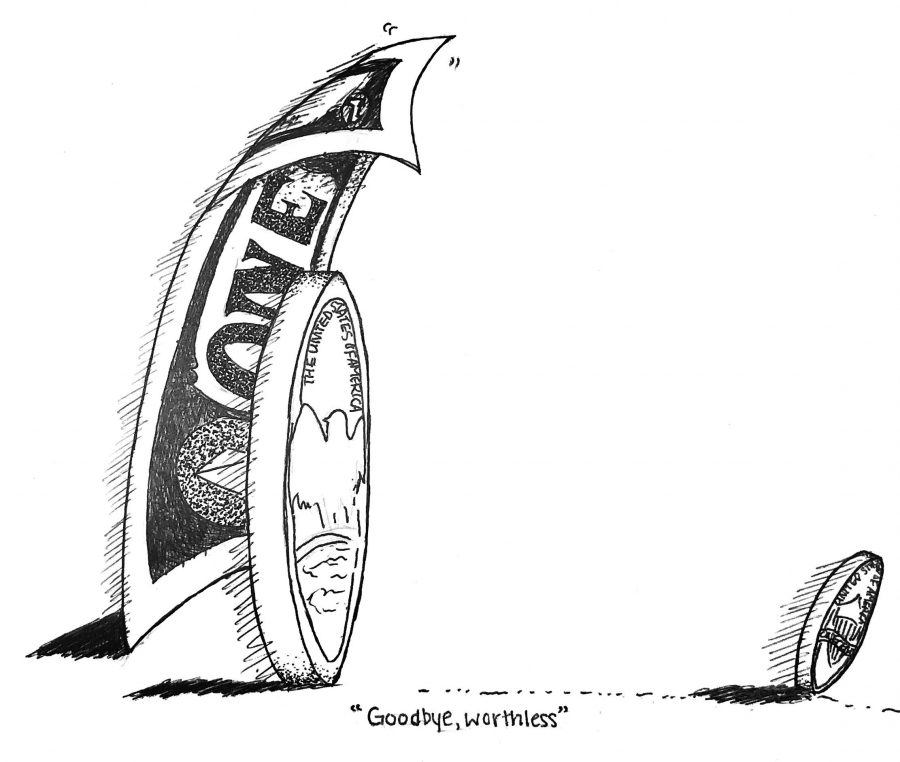Why the penny doesn’t make much “cents”
Let us face it: the most common place a penny is seen is between the cushions of your couch, along with a crushed potato chip and a used napkin.The penny is being used more by the sticky hands of toddlers throwing them into a wishing fountain instead of at retail stores. Years ago, a penny went much further: in 1935 you could purchase a strand of red licorice for one penny; 5 pennies could score you a ticket to the movies! Nowadays, you need at least a quarter for a stale gumball, and a movie ticket could set you back more than 10 dollars.
It likely has been a while since the last time most people used a penny compared to a dollar bill, or even a quarter for that matter. The only time I use a penny is when I am trying to get rid of it.They jangle around in your pockets everywhere and are small and easy to lose compared to a crisp dollar bill or even a bulky quarter. Not to mention they are practically worth nothing. According to Walmart, a box of Milk Duds costs 98 cents. It would seemingly be much easier to have four quarters than 98 pennies to pay for this movie theater treat. Because of their burden, pennies are not used enough for it to make sense to produce them.
The penny has been quite expensive to produce in recent years. According to Coin News Website, it cost one-and-a-half cents to make the penny in 2016. That may not seem like much, but it is 1.5 times more expensive to produce than it is even worth. If we were somehow able to stop producing the penny and use the money towards other funds in this country, perhaps it would be money well spent. But it just does not seem right to waste money on a worthless piece of copper and zinc.
Pennies started out as a useful and valued piece of currency. However, we need to wake up and face the facts: times have changed. One would think the money would be better used in other areas of the budget. Of course, there are always concerns. According to Americans of Common Center, if the penny ceased to exist, sales tax would go up. Instead of retail items being $9.99, it would rise to $10.00 and over the years cost the average American a fortune! While this is a legitimate argument, it is an easy fix. Pennies would still be accepted as U.S. currency, however the production of pennies would come to a halt. That way, nothing would change with our sales tax and the average American consumer wouldn’t have to worry about increasing prices. According to CNN, Canada has already used this method. On Feb. 4, 2013, the Canadian government stopped minting pennies, and it is working just fine. We need to stop giving excuses and get rid of the penny to help save money and make America a slightly better place.
Your donation will support the student journalists of Woodbridge High School. Your contribution will allow us to purchase equipment and cover our annual website hosting costs.

Hey Warriors! I’ve been in the Golden Arrow for three years now, and I am incredibly excited to be serving as your In-Depth Editor this year. I am also...







